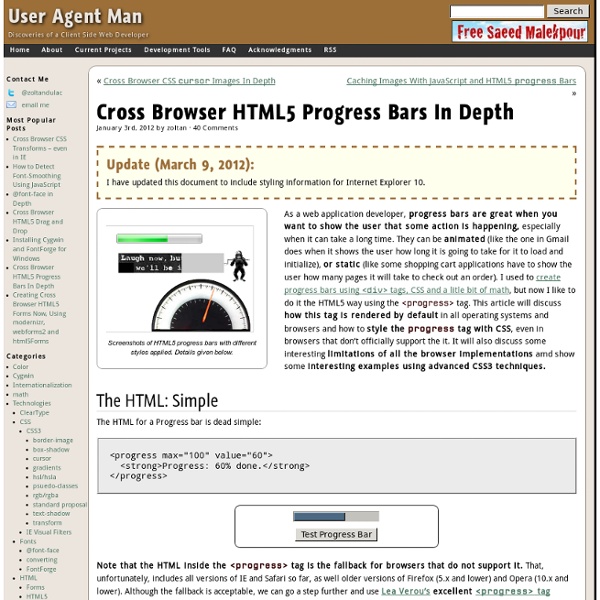



Textarea Auto Resize On a current project, I was trying to find a way to auto-resize a textarea according to some content that would be loaded in dynamically via Ajax. I didn’t know the height of the content and the textarea element doesn’t resize naturally like other HTML elements, so I needed to update the height of the element with JavaScript each time the content changed. It seemed like a simple task. After doing a search to see what types of plugins and scripts were floating around to do this, the examples I found seemed a little overly complex. While most solutions seemed to incorporate some complex math calculations, I thought of a better way. Using a Hidden Clone Element A <div> element will naturally stretch to fit the height of its content (assuming no floats or absolutely positioned elements are involved). The Code One of the keys to this solution is the CSS. First here’s the CSS for the textarea: Take note that I’ve added a separate class with overflow: hidden, to prevent scrollbars from appearing.
Simulate Realism with CSS3 16th February, 2010 Tom Kenny Tutorials CSS3 is here to make our lives easier as web designers and developers. While it’s not something we can always rely on heavily for layout purposes just yet, we can use it to enhance certain aspects of our designs by spending a considerably less amount of time doing so. However, CSS3 has not been created for the sole purpose of making it easier and quicker to create a website but also so we can create much better sites than we ever could with CSS before. Here are a few examples of how CSS3 can improve the web. Polaroids – View Demo Despite not being around today, polaroid images are still iconic and because of this is still a great way to display photos. A subtle shadow gives the impression that is sitting on a flat surface and by scaling and increasing the size and positioning of the shadow on a hover state we can create the illusion that it has been raised slightly from the surface. Buttons – View Demo Why do buttons exist in web design?
How to recreate the new e-bay site scrolling effect In this tutorial we will try to recreate the scrolling effect you’ve seen on the new e-bay site. We’ll create a simple responsive one-page site presenting the beauty and benefits of lavender. No javascript needed – we will use only css. Step 1 – Prerequisities We will need 3 background images, that will stretch to full page width. Mine are about 1800px x 1200px. Step 2 – Html The markup is simple. <! Step 3 – basic css The wrapper class is defined as follows. Since we want each section and the header to behave responsively, we’ll use only percent units. The value of 4.16667% corresponds to 50px when the wrapper has its maximum width. You’ll find the complete stylesheet in the download files. Step 4 – the scrolling effect We don’t use any Javascript, our scrolling effect is obtained purely with css. We just have to assign the background image to each section Step 5 – last tweaks Since background-attachment:fixed is not supported in mobile Safari we’ll add the following media-query And that’s it!
The amazing powers of CSS Yesterday at the office, we were coming up with strange and magical CSS tricks. Take this one for instance, it makes empty links very visible: Check out the live example at jsFiddle You can also style absolute links differently from relative links: Check out the live example at jsFiddle If you want to have a different style for links pointing out of your domain, you can use the :not() selector. Check out the live example at jsFiddle Just to remind you that you’re not limited to styling links, here’s how to make all PNG images inverted: Moving on from attribute selectors, did you know that you can make the document head visible, along with the other elements there? Or that you can use the awesome power of CSS attr-function to fill in the :after and :before content? Check out the live example at jsFiddle Note that attr() reads in the attribute values of the matching element, so if you use it for #foo:before, it reads the attributes from #foo.